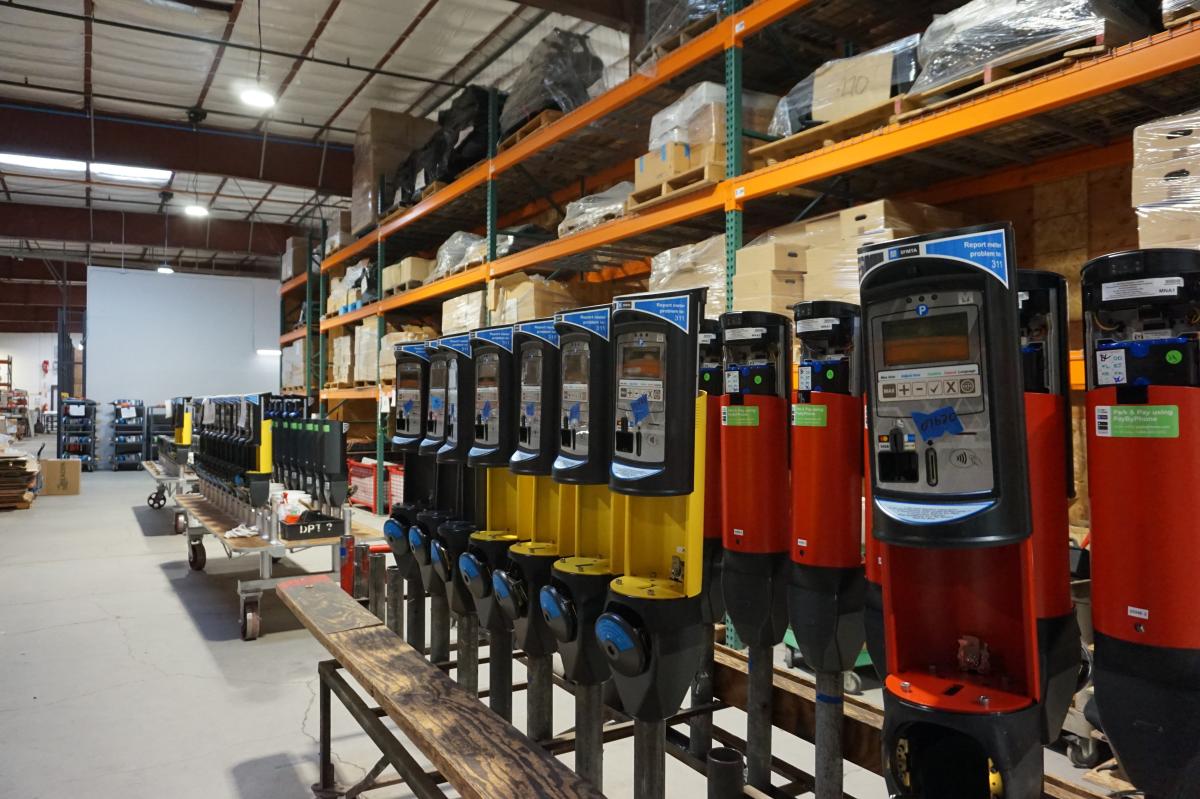
Our staff are installing thousands of these new single-space meters across the city. They'll make it easier to pay for parking.
San Francisco has 27,000 metered parking spaces, and we're working hard to upgrade every single one.
The goal: replace outdated technology with meters that are easier to use. It's all part of our Parking Meter Replacement Project.
We'll share how the upgrades help and look back on the history of parking meters in the city. For even more details, you can check out our Illustrated History of San Francisco’s Parking Meters webpage.
Upgrading thousands of meters: how the new technology helps
The city’s parking meters use cellular service to update meter hours and rates. This technology also provides digital payment options to customers.
With the change in the cellular industry from 3G to 5G wireless technology, we needed new meters with 5G technology to keep wireless features working. We also wanted to add features that would make them more convenient.
To meet these goals, we launched the Parking Meter Replacement Project in 2022. The plan: upgrade every parking meter across the city with new technology.
The details:
We’re replacing half of the city’s meters with new single-space meters. So far, we’re almost 50% done with this part of the project.
For the other half of metered spaces, we installed multi-space pay stations. They feature a new pay-by-license-plate parking system. All of this work is complete.
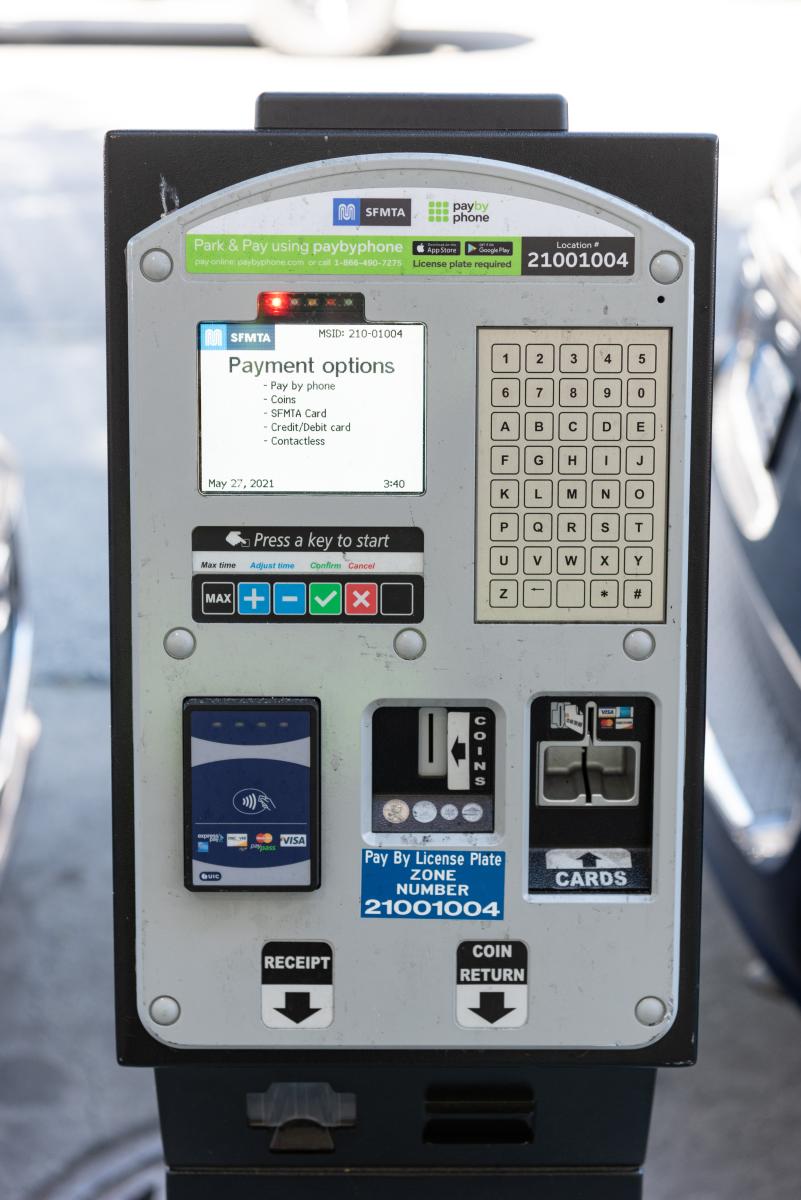
Our new multi-space pay stations make it easier to pay for parking – and even return to the same block.
How the upgrades help:
- Screens are easier to read. The new single-space meters and pay stations have larger screens and a more legible font than the old meters.
- Information displays in multiple languages. The new single-space meters and pay stations can display text in English, Spanish and simplified Chinese.
- There are lots of ways to pay at multi-space stations. You can now pay with credit cards, coins or your mobile phone. Learn about mobile and web browser options on our Parking Meters – Ways to Pay webpage.
- The only thing to remember is your license plate number. At the new multi-space pay stations, you no longer have to remember your parking space number. Your license plate is all you need to enter.
- There’s more flexibility to pay, leave and return. Our new pay stations offer more flexibility as you get around. You can now pay, park, drive away from the block to run another errand and return to the same block within your time period. You won’t have to pay a second time.
Across the city, meters help ensure that parking is available in high-demand areas. They help people shop, try a new restaurant or get to appointments. We hope these upgrades make it easier for you to get where you need to go.
For details on the project, check out our Citywide Parking Meter Replacement webpage.
For general information on parking in the city, visit our Parking Meters webpage.
Curious how parking meters reached this point? Let's explore their history – in America and in San Francisco.
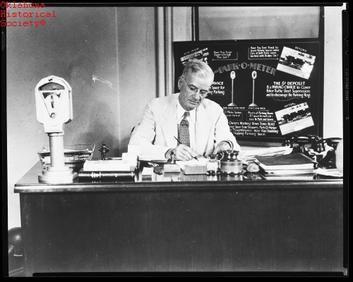
Carl C. Magee at his work desk, photo courtesy of Oklahoma Historical Society.
Introducing parking meters: a lawyer solves a growing problem
As cars became more affordable in the United States in the 1920s and 30s, traffic congestion increased. People struggled to find parking in cities.
To help solve the parking problem in his own city, newspaper editor and lawyer Carl C. Magee invented the parking meter. The world’s first working meter was installed in Oklahoma City on July 16, 1935. It charged a rate of five cents per hour (about $1.11 today).
This groundbreaking move sparked debates in cities throughout the country, including San Francisco.
Both population and commercial activities were growing here. Some agreed that meters could help manage the increasing demand for parking spaces.
Most merchants were in favor of meters, because they discouraged long-term parking in prime spots outside their businesses. But not everyone was convinced that it should be legal to charge people to use public streets.
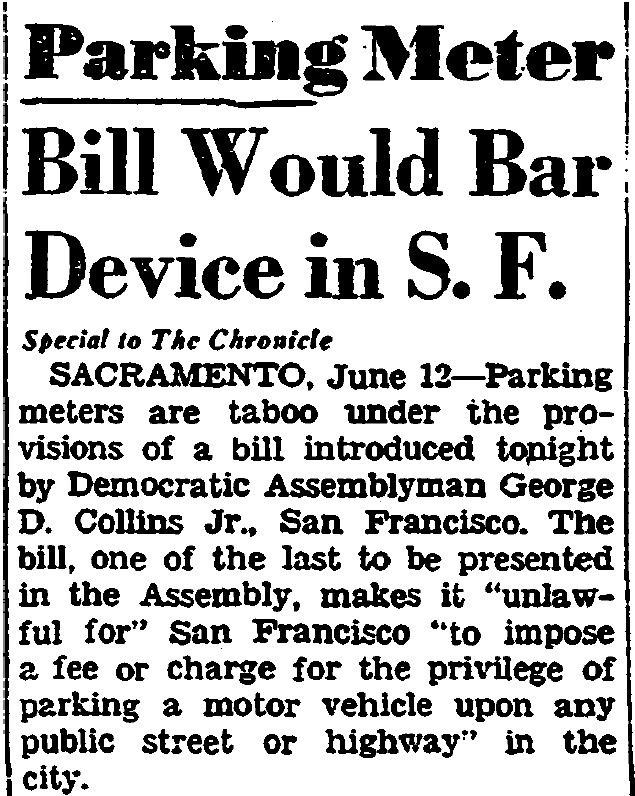
Excerpt from San Francisco Chronicle, June 13, 1939, p. 3
In July of 1936, the San Francisco Board of Supervisors passed an ordinance authorizing the installation of parking meters. It put the Police Commission in charge of implementation, traffic control and regulation.
But the effort faced delays, and then World War II broke out. The government rationed gasoline, and officials put the parking meter issue on the back burner.
After more than a decade of debate, the Police Commission finally gave meters the green light.
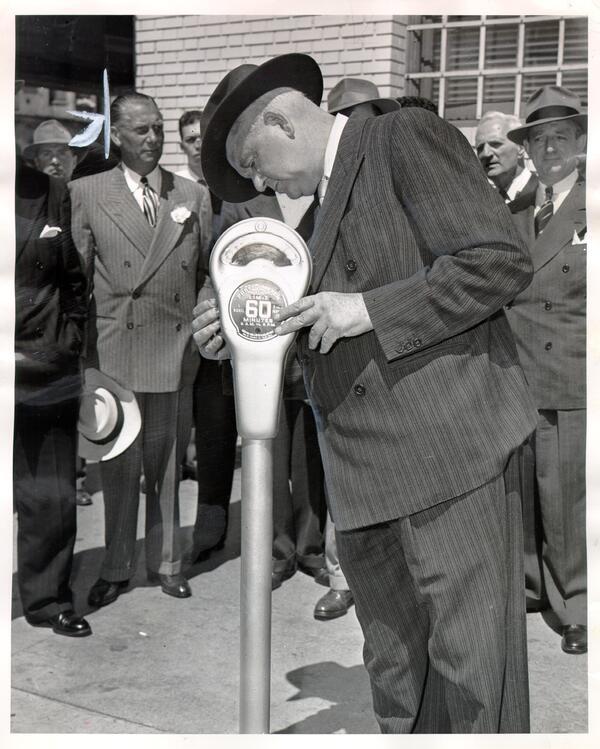
Mayor Roger D. Lapham testing the first parking meter in San Francisco, 1947 Aug. 21. Courtesy: San Francisco History Center, San Francisco Public Library.
In August 1947, San Francisco installed its first parking meters along the Polk Street business district. The city set rates at one cent for every 12 minutes, or five cents an hour. The money that came in was split equally between the city and the meter supplier until it earned back the initial costs.
This marked a pivotal moment, forever changing how people park and drive in our city. While they weren’t popular with everyone, meters caught on. Soon, they popped up in commercial corridors across the city.
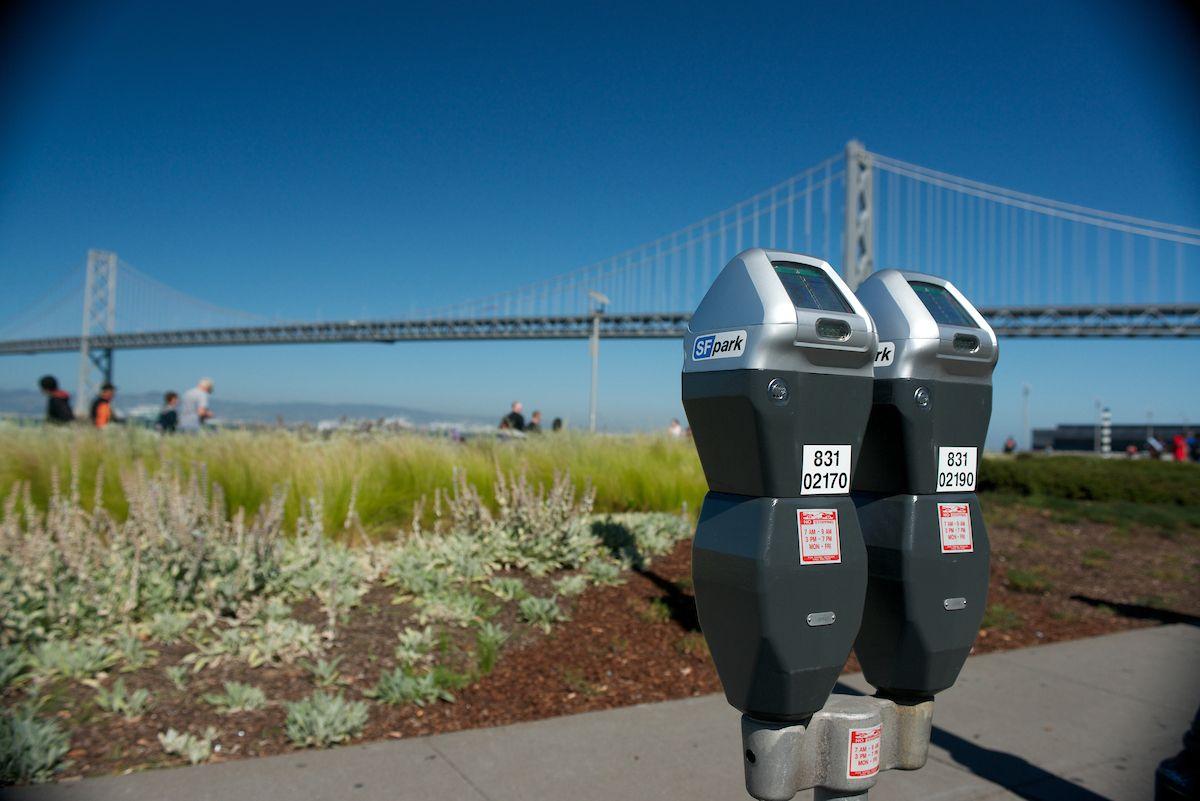
In 2012, our agency launched the "SFpark" program. It set parking prices based on demand.
Now, it’s been 77 years since San Francisco started using parking meters. And, they have come a long way from the first spring-wound devices of the 1930s.
Today’s meters offer drivers more than half a dozen ways to pay. Visit our Parking Meters - Ways to Pay webpage to see the available options.
Meters also provide data on parking demand, which helps our agency manage the city’s transportation network. While no one likes to pay for parking, meters have become an essential part of improving parking availability and reducing congestion in cities around the world.
To learn more about the history of parking meters in San Francisco, visit our Illustrated History of San Francisco’s Parking Meters webpage.